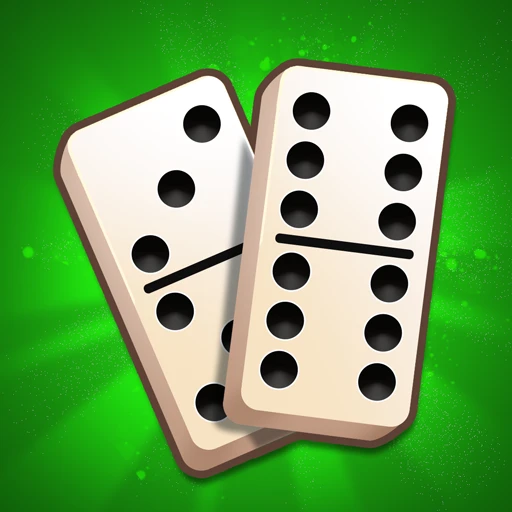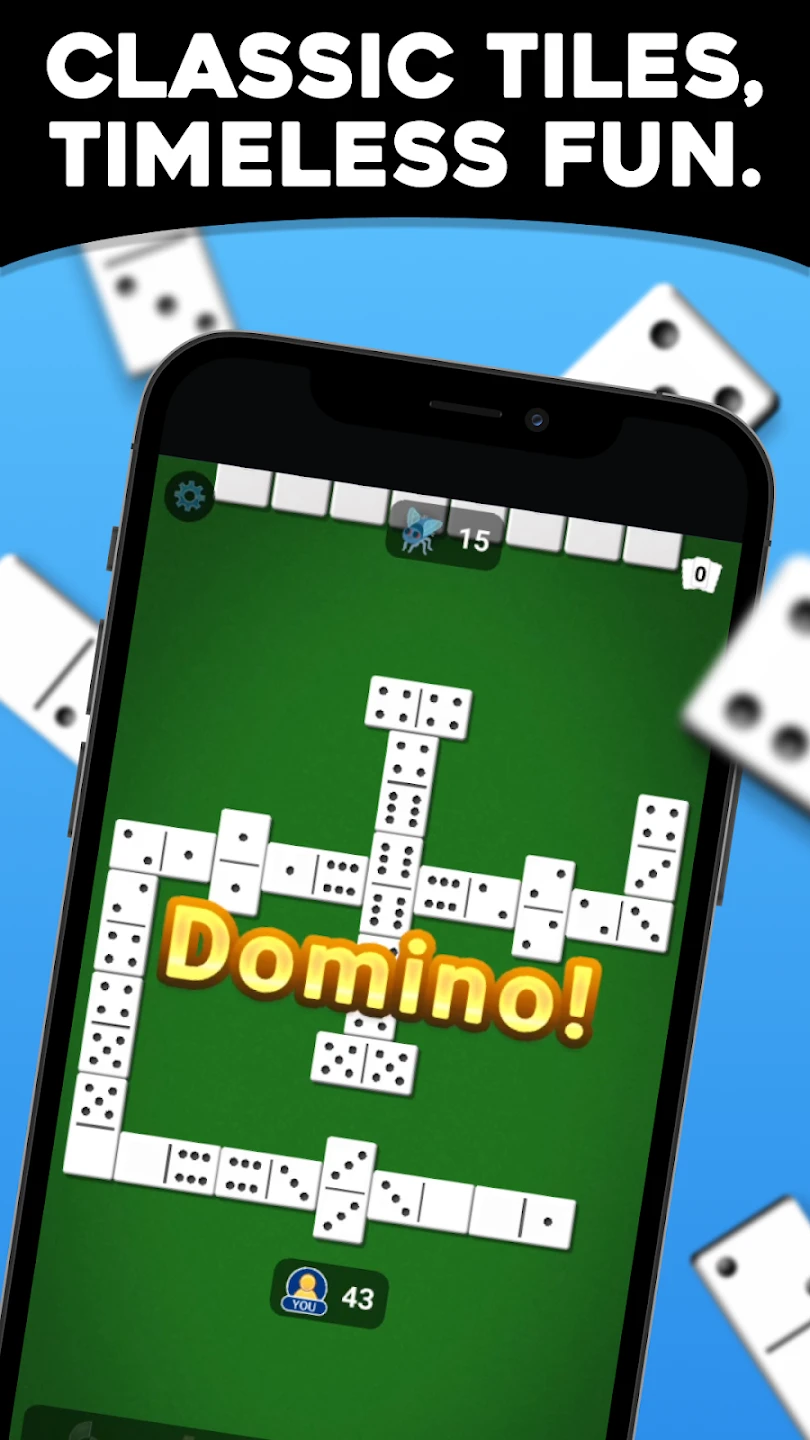 |
|
| Rating: 4.5 | Downloads: 500,000+ |
| Category: Board | Offer by: MobilityWare |
Dominoes: Classic Tile Game is a digital adaptation of the centuries-old strategy board game. Belonging to the popular tile-matching puzzle genre, it brings the simple yet compelling concept of connecting domino halves into the modern era. It is interesting due to its potential for deep strategic thinking amidst an element of chance, combined with fast-paced or relaxing play depending on the mode.
The gameplay of “Dominoes: Classic Tile Game” offers a satisfyingly tactile experience, often matching traditional tile-matching appeal with potential for competitive play. Depending on the specific version, it could feature vibrant, minimalistic graphics or fits perfectly within casual gaming apps. The simple ruleset ensures accessibility, making it appealing to both casual players and dedicated strategy enthusiasts seeking a quick challenge or extended sessions.
Gameplay and Features
- Core Gameplay Loop: Players take turns drawing domino tiles and strategically placing them on the central layout or designated board, matching the number pips on adjacent halves. The objective is to connect all the dominoes drawn by a player, or often, the player with the lowest score after a pre-defined number of rounds/draws loses. Players interact by leveraging probability, foresight, and blocking opponents’ progress through clever tile placement.
- Visuals or Art Style: The game typically features clean, cartoony graphics representing the dominoes themselves, often laid out on a simple tiled or background. Animations might show tiles sliding smoothly into place. Some versions capitalize on the classic wood or stone tile look, potentially with stylized or colorful representations.
- Modes or Levels: Common modes include 4-player multiplayer (either against friends or AI), single-player campaign levels focusing on specific layouts or time limits, and casual rounds. Highlighting unique content could involve special themed layouts, bonus tiles during certain events, or timed challenges within the casual modes.
- Controls or Interface: Gameplay is typically touch-based for mobile versions, featuring easy-to-tap dominoes to draw and select, along with drag-and-drop mechanics to place them correctly. The interface displays player scores, remaining tiles, and the central board layout clearly. Controls should be very intuitive, allowing focus on strategy.
- Customization or Power-ups: Standard digital versions often lack extensive customization for tiles or deep progression systems, focusing instead on re-playability through varying layouts or competitive modes. Motivation for ongoing play comes from mastering strategies, aiming for low scores in competitive modes, or discovering new variants within the game.
How to Play
Beginner’s Guide:
- Step 1: Download and install the “Dominoes: Classic Tile Game” app from the relevant app store. Launch the application and potentially sign in or start with local settings if playing against AI.
- Step 2: Draw a starting hand of dominoes (typically around seven tiles per player). Observe the central board setup, if any. Take your turn by drawing a domino from the boneyard and then strategically placing one or more matching tiles from your hand onto the laid-out chain.
- Step 3: Continue playing turns. You aim to connect all dominoes in your hand by placing them adjacent to the existing layout. In competitive play (4-player), disrupt your opponents’ ability to play is part of the goal. The game ends when a player connects all their tiles or cannot legally play a domino, with the lower-scoring player (if it’s your turn at the end or inability to play) typically declared the winner/loser based on rules selected.
Pro Tips:
- Plan Ahead: Always consider not just your next move but the following one(s). Try to anticipate how certain tile placements might limit your or your opponents’ future options.
- Connect Tiles When Possible: Try to play multiple dominoes at once where the numbers match between them and the existing layout. This prevents blocked tiles and clears space, making play easier.
- Focus on Fewer High-Value Tiles: In competitive play where unmatched leftover tiles are penalized, sometimes it’s smart to hold onto a few high-value tiles that you cannot immediately play to avoid a huge penalty if you’re forced to draw and end your turn.
Similar Games
| Game Title | Why It’s Similar |
|---|---|
| Mahjong |
Shares a similar tile-matching genre. Known for complex rulesets and deep strategy tied to traditional Chinese games. |
| Connect Four |
Appeals to the same type of players seeking deductive reasoning and planning. While different mechanics, it involves connecting pieces for victory and includes potential competitive play. |
| Crazy Stones |
Popular among fans of “Dominoes: Classic Tile Game”. Has comparable replay value through multiple difficulty levels and offers challenging strategic opponents. |
Frequently Asked Questions
Q: How difficult is the multiplayer mode with AI versus human players?
A: The difficulty scaler in the multiplayer mode typically ranges from “Easy” (beginner AI) to “Advanced” (challenging Minimax AI). The complexity is generally based on how well the AI predicts your moves and blocks connections, mimicking thoughtful human play to different degrees.
Q: Can I see what tiles are available in the boneyard without drawing or playing?
A: Generally, no – much like classic physical dominoes, the specific tiles in the boneyard are hidden information to maintain strategy and game flow, unless the specific variant rules of that game version explicitly allow for a summary display.
Q: Are there different game lengths or time limits within the app?
A: Absolutely, replayability is key! Many versions offer diverse game modes such as races to connect your tiles first or timed rounds attempting to clear as many tiles as possible within a time limit. Single-player levels often have specific targets or constraints beyond score tracking.
Q: Is “Dominoes: Classic Tile Game” suitable for older adults?
A: Yes, definitely! Many users find it suitably engaging due to its simple mechanic, low learning curve, and ability to be easily played in short sessions. The focus on calm concentration and strategic deduction makes it a potentially good brain exercise.
Q: How can I challenge a friend to a match?
A: On many digital platforms supporting player vs player (PvP), you can usually find an option to start a match, share a unique game code or link via text message or email (if the game supports platform messaging), or connect directly through cloud-based matchmaking if that’s an available feature in the specific “Dominoes: Classic Tile Game” version you are playing.
Screenshots
 |
 |
 |
 |
